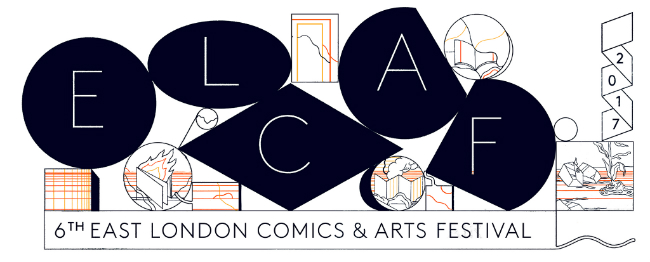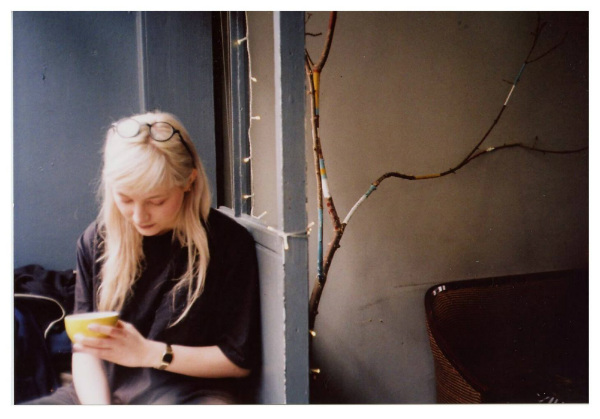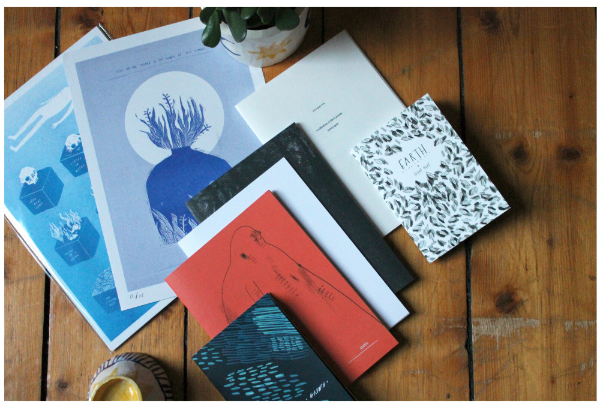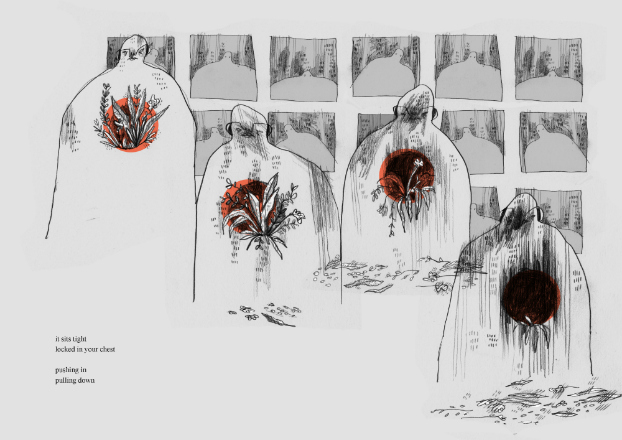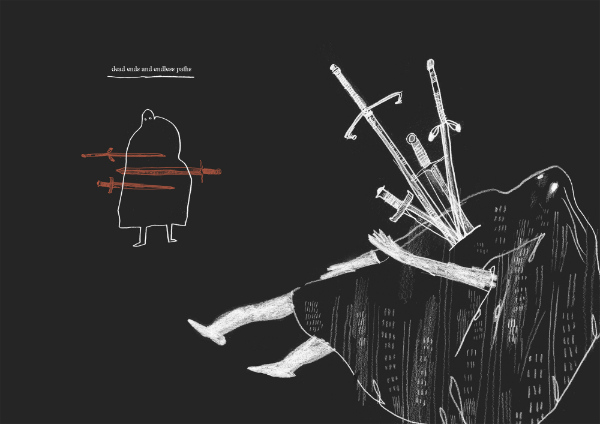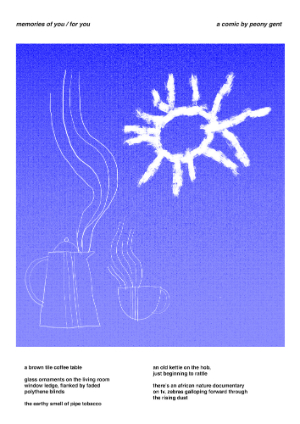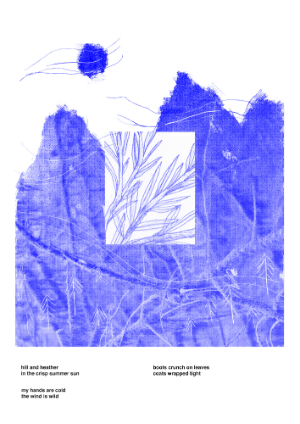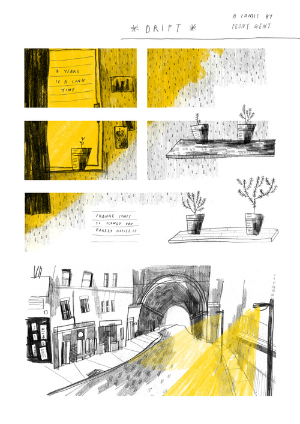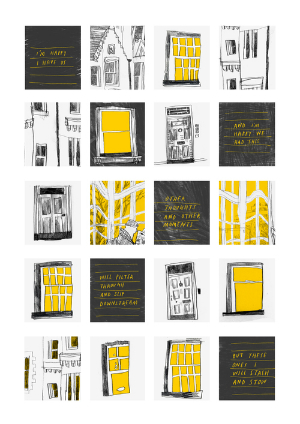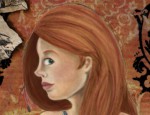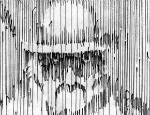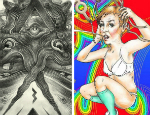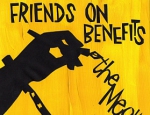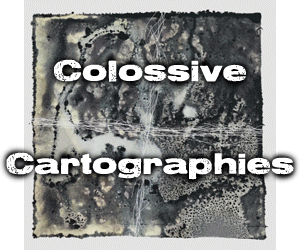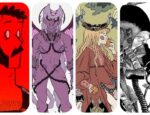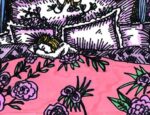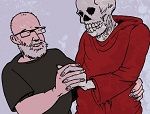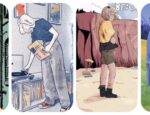ELCAF WEEK!
If you’re a regular BF reader then Peony Gent will need little introduction. She is, of course, one of Broken Frontier’s 2017 ‘Six Small Press Creators to Watch‘ and a newer artist on the UK self-publishing scene who has a truly distinctive approach to the page. Peony’s blend of evocative comics vignettes and graphic poetry first came to prominence through the ever popular anthology Dirty Rotten Comics and she has produced a growing number of minicomic zines herself.
She is also a guest on this weekend’s ELCAF Broken Frontier Panel on ‘Comics and the Micropublishing Revolution‘ and will be exhibiting there across the weekend. Today I chat to a creator I believe to be one of the most exciting new voices in the small press in years as we discuss graphic narrative, the comics/zine crossover and the cathartic properties of the creative process…
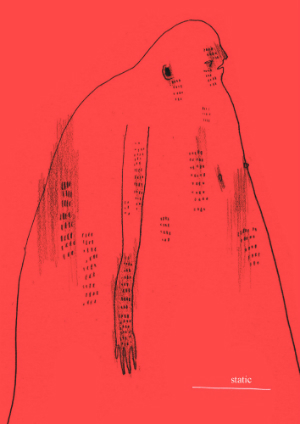 ANDY OLIVER: Let’s begin with asking you to talk about your wider artistic practice to date and the other mediums you’ve worked in… especially in the context of being named one of It’s Nice That’s Graduates of 2016. The first thing that struck me about your comics work – and, indeed , a major factor in my decision to include you in this year’s BF ‘Six to Watch’ – was that your distinctive approach to comics seems unaffected by any limiting preconceptions about what the form should be. What was your entry point into the world of sequential art?
ANDY OLIVER: Let’s begin with asking you to talk about your wider artistic practice to date and the other mediums you’ve worked in… especially in the context of being named one of It’s Nice That’s Graduates of 2016. The first thing that struck me about your comics work – and, indeed , a major factor in my decision to include you in this year’s BF ‘Six to Watch’ – was that your distinctive approach to comics seems unaffected by any limiting preconceptions about what the form should be. What was your entry point into the world of sequential art?
PEONY GENT: Comics have always been an interest of mine throughout my life (my dad has collected and read them as long as I can remember), but truly entering the medium myself and being forced to confront what the idea of sequential art could be began when I went to university to study illustration in Edinburgh. I was lucky enough to have tutors and a course that really championed experimentation and reflective study, prioritising artistic growth over box-ticking for grades.
Entering the world of sequential art through the door of zines and illustration rather than the door of comics has also subtly reflected my output – I never thought I was breaking preconceptions because I’d never really thought about what those preconceptions were, I was simply making what I wanted to make in a clear a format as I could. Making work in an environment where it was primarily for me rather than for any kind of commercial audience also really helped this natural development as well.
Can you tell us a little about your self-published back catalogue of comics zines so far?
I seem to have unintentionally gained a little library of one-word-titled one-subject books, all sitting somewhere on that scale of sequential narrative and graphic poetry. Earth / Growth / Doorways / Static / Drift are the titles of my self published work so far (although looking back at this I realised I forgot Leather + Bone, which annoyingly breaks the pattern!).
Whilst they kind of vary in subject, from very specific life events of mine to general musings and thought tangents, they definitely all come from one particular place of me wanting to present stolen moments and captured feelings in time to readers. I’m very interested in the nature of memory and the small connections people make in everyday life, and it’s something I return to again and again.
A number of your zines to date have explored those subjects like loss, grief, loneliness and self-reflection. What is it about the power of comics as a form that makes it such an empathetic medium for examining those themes?
Comics are such a beautiful medium for self expression – it’s one of the most accessible and unpretentious art forms out there. In a drawing there’s so much which can be conveyed so viscerally with so little, which really appeals to me. I’m always very aware of trying not to ‘overwrite’ when making graphic narratives, or making the drawings just simple illustrations of what the words are. Text and image should elevate the other with neither taking precedence. There’s also something very intimate in reading autobiography comics as opposed to autobio writings – we don’t entirely think and remember in words after all, it’s a combination of flashes of all of the senses. Comics can do a really good job of reflecting that unfiltered thought process in my mind.
Given the resonance and connectivity of your work is there an autobio element to some of those more poignant pieces?
Yes completely. I’ve always found autobiographical work to be, whilst not to perhaps say the easiest, the most natural form of work for me to make. Truthfully it boils down to art being a coping mechanism for me, a form of catharsis. Working through these repeating feelings of fear and despair and anxiety by putting them down on the page may not make them go away, but it gives them a purpose and a use they otherwise in no way have.
A large part of me continuing to make autobiographical work is also the response I’ve had from readers. I remember I really struggled with the idea of printing and selling Earth, (my very first personal comic that worked through my feelings surrounding the death of a family friend), as a commercial object – it felt crass and crude to be selling my memories of a person like that. It really did seem to connect with some people though, and whatever small amount of relief it gave them to read it, has very much made me feel like it’s then worth it for me to print it.
I also think in some ways it’s a very selfish thing that I do – I’m seeking validity in my emotions and a connection with others through these zines, to justify myself and my feelings. (Quite a negative way to look at anything creative I know, but something I feel like I have to confess).
One of the defining elements of your narratives has been its employment of striking visual metaphor. Static is a particularly fine example of this. Would the term “visual poetry” be a fair one to describe the Gent oeuvre?
Visual poetry is a term I would never have thought of myself, but really resonate with! Also, it makes me found much more intellectual and thoughtful a person than I really am, so I’ll definitely go with it. Although it does actually make sense in what I’m trying to create, most of my writings I would call ‘freeform poetry’ as opposed to being strict narratives, and the visuals I make are in a way meant to be the visual equivalent of those instinctive unfiltered words.
Many readers will have found your work via the ever inclusive anthology Dirty Rotten Comics. How did you get involved with DRC and how important has it been in building your profile in the comics world?
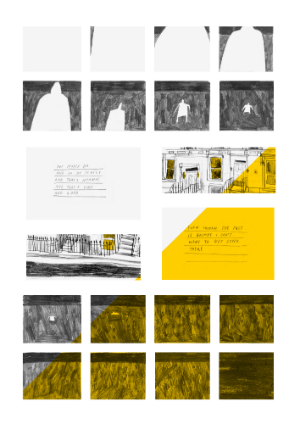 It was actually complete chance I got involved with DRC in the end, I think I saw a poster up on the wall of my university studio and thought I might as well enter a comic I’d already happened to have made for another project. It’s been an absolutely lovely community to have entered into, and a thing I’m very proud to have been a part of for more than a few issues now.
It was actually complete chance I got involved with DRC in the end, I think I saw a poster up on the wall of my university studio and thought I might as well enter a comic I’d already happened to have made for another project. It’s been an absolutely lovely community to have entered into, and a thing I’m very proud to have been a part of for more than a few issues now.
What’s been particularly intriguing about reading your work in DRC and in its self-published form is the difference in presentation. Your zine versions invite the reader to linger longer on each individual image while their Dirty Rotten Comics incarnations have presented them in a traditional “multi-panel” format giving them a more sequential flow. What for you have been the storytelling advantages to both formats in terms of the different ways the reader interacts with the page?
Personally I’m always more of a fan of the page by page zine version of my work – it tends to be the format I initially plan a comic in, and I love the slow pacing turning pages gives to a piece. However as a marketable format zines are very difficult: it’s much more difficult to transfer the content into an online form this way, and it’s harder to put them together into one large collection later than if they were more ‘traditional’ comics.
Your most recent offering in the celebratory DRC #10 (below) seemed to fall very much in the area of graphic poetry rather than strictly comics per se. Do you see your work as sitting somewhere in that intersection between graphic narrative and pure sequential art?
I definitely feel I sit somewhere on that in-between, using whichever format fits the work I’m producing best at the time. This does have a slight pitfall in sometimes making me feel like a bit of a phoney in the comics world, because the majority of my narratives usurp traditional comic frameworks so much. However that’s also something I absolutely love about the UK small press and independents scene – it’s open and accepting to anything and everything under that broad ‘comics’ umbrella.
Are there any plans for a longer-form comics narrative in the future?
A long narrative project is something I’ve always been dying to do to be honest – I used to dream of doing one big ‘proper’ graphic novel for my university final year project, but my indecisiveness meant I never quite got around to it. I’ve also always had trouble settling on a subject to focus on, since my autobiographical illustrated poetry never really leant themselves well to being presented in a more drawn out examined format. It’s certainly something that’s on the bucket list though! I’d love to create something aspiring to be similar to Adrian Tomine’s Killing and Dying, or anything by Anders Nilsen, books where they’re a collection of small stolen moments.
Outside of the comics arena where else may Broken Frontier readers have seen your work recently?
I’ve mainly been working on my portfolio and self-published comics work this year really, but I have been doing quite a few of the regular zine circuits up in Scotland where I live currently. I’ve also been doing a fair few more bits of ceramics, which you might have seen on my website. And whilst all of my comics are entirely self-published I have collaborated with a couple of different groups and anthologies this year. I’ve got a piece out in the Big Brown Eyes Collective’s next publication, and I try to work with the lovely Counterpoint magazine as much as I can (an Edinburgh-based risograph magazine).
What’s next for Peony Gent? Are there any upcoming projects you can tell us about?
Next year I’m actually off to the RCA in London to study a masters in Visual Communication, so hopefully I’ll be around the London comics scene much more. Alongside my academic work I’m also very interested in expanding my range of ceramics – I’d love to work on a complete range of homeware sometime in the future. Of course this all depends on funds and time allowing, but I can dream! In much the same way that I love the intimacy and accessibility of comics, I love the same about illustration being used on items with a practical use as well as an aesthetic one. And as I mentioned earlier a long format comic project has long been on the cards, so who knows, next year might end up being the time I actually get around to making one…
For more on Peony Gent’s work visit her site here and follow her on Twitter here. Peony will be at ELCAF from Friday-Sunday at Table 10. She will also be a guest on the Broken Frontier Panel: Comics and the Micropublishing Revolution at ELCAF on June 17th. More details here.
You can also buy copies of Dirty Rotten Comics from their online store here and they will be at Table 9 at ELCAF on Saturday and Sunday.
For regular updates on all things small press follow Andy Oliver on Twitter here.
